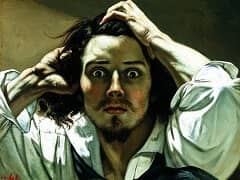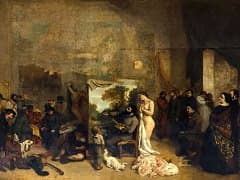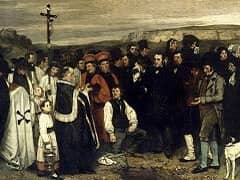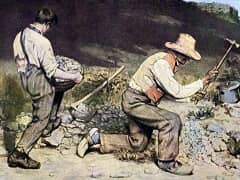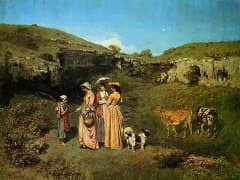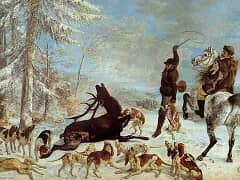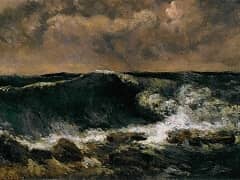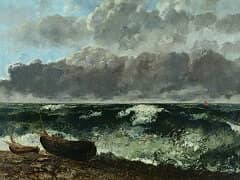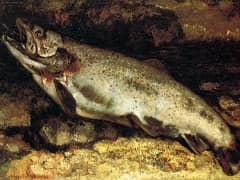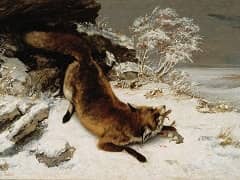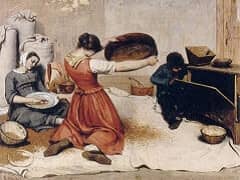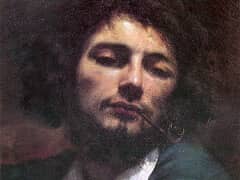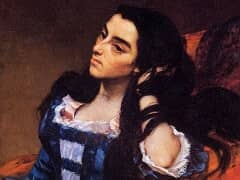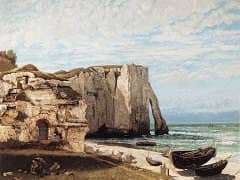The Shaded Stream, 1865 by Gustave Courbet
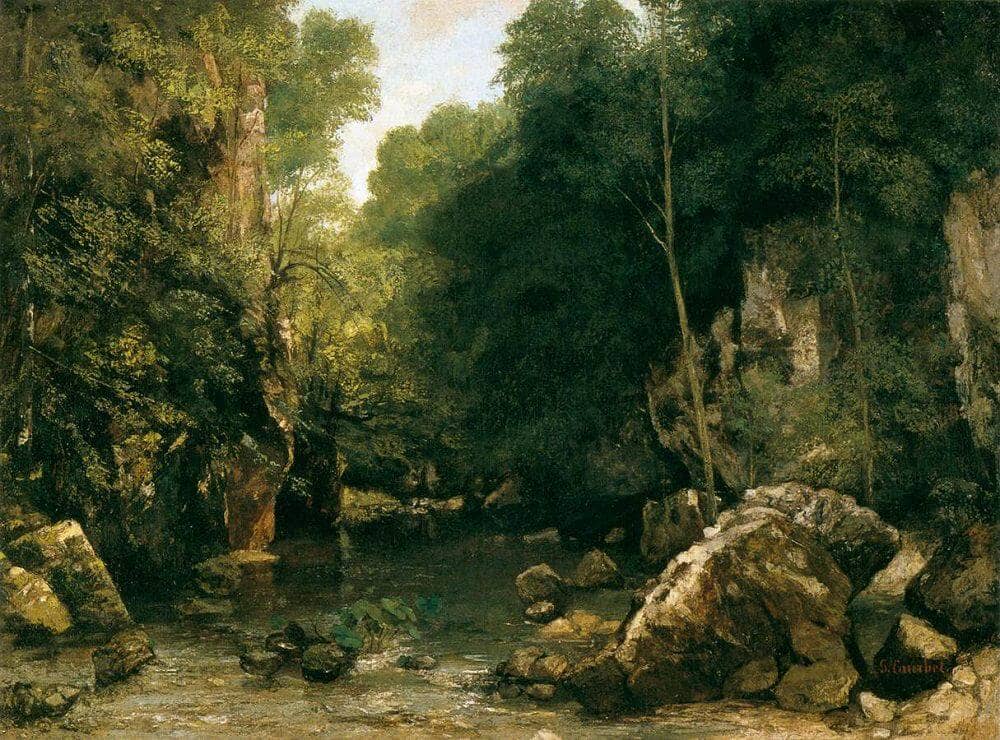
Le Puits Noir is a place in the forest near Ornans where the little Breme River flows between high rocks from whose cracks grow luxuriant vegetation, forming a kind of high canopy over the quiet pool in the river. It is a place of enclosure and secrecy, filled with the rocks, foliage, and water for which Courbet loved to find painterly equivalents, and it was one of his favorite landscape motifs.
In terms of the pictorial structures of his landscapes, Courbet was certainly not part of the tradition of the picturesque, with its focus on landscape motifs that were conceived of as being intrinsically pictorial. But the motifs to which he was drawn in his native region were not anonymous corners; rather they were natural features such as specific rock formations, river sources, and hidden glades. These places were already well enough known to the local people to have acquired such names as Le Puits Noir, or The Black Well.
What Courbet did, like other landscape painters of the nineteenth century, was to represent these sites in sufficiently powerful pictorial form that they acquired a new kind of existence in the visual imagination of the culture. Part of the force of Courbet's paintings comes from the metaphoric resonance with which he imbues specific landscape features. The fortresslike cliffs of the open highlands that the artist often chose to paint contrast sharply with the Puits Noir, a place of silence and seclusion in which secrecy and organic vitality combine to provide an analogue of sexual mystery. Courbet constructs the image in terms of a pure animation of pigment, just as foliage, dappled rock, and moving water are conjured up through an enormous variety of touches, scumbles, and strokes. It is a way of painting that produces a powerful paradox of solidity and verisimilitude coexisting with an overall network of purely painterly invention. The viewer is presented at the same time with the representation of an unmistakable place, a there in the world, and with a painting in which the processes of creation are open to view. This invitation to the viewer to participate imaginatively in the complex and varied manipulation of pigments that construct the painting is one of the earliest attributes of modernity. It is a way of painting that promises spontaneity and freshness of perception, and which in order to succeed demands that both these be genuinely present. These qualities are lost in followers and weakened by the pressure to paint to market demand. Understandably but perhaps unfortunately, the subject of the Puits Noir with its atmosphere of solitude and remoteness from urban cares became a popular one among collectors. Courbet, in fairly constant conflict with the juries of the Salon, looked increasingly to dealers, and through them to collectors, who ordered paintings by name and type, and this was a type they liked. In that period when the Salon system was dying and the dealer system being born, it was the artist and the art of painting that showed the strain. But when Courbet painted landscape at his best, as he very often did, he made a unique contribution both to the art of painting as such and to the repertory of those places that we can imaginatively enter through the art of landscape painting.

